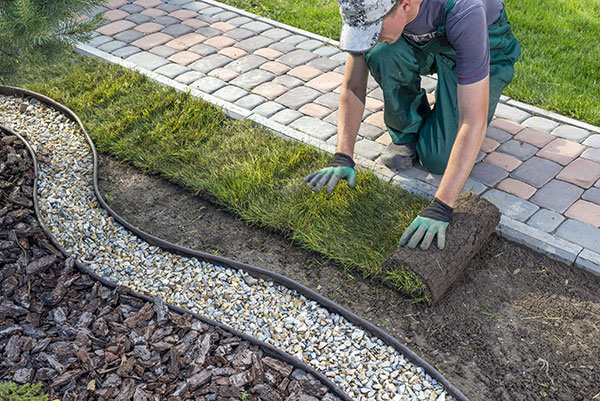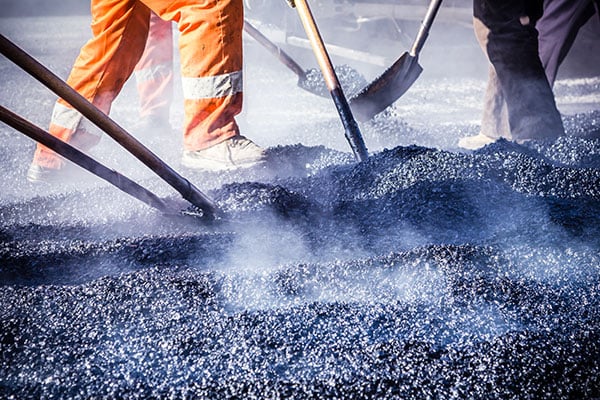Keeping your association's landscaping neat is important throughout the year, but can be even more important in the summer when residents are more likely to be using outdoor public spaces. Summer landscaping preparation should be done in late spring and early summer each year. Here are some tips:
Top 10 Summer Landscaping Tips for Your Community Association
Getting the jump on your landscaping responsibilities early will make all the difference.
10. Evaluate your irrigation system and check for leaks.
This is particularly important if you live somewhere with water restrictions. Either way, however, you should take advantage of the change of seasons and consider replacing any older or outdated parts of your irrigation system. Older systems use more water than necessary and are prone to breaking down unexpectedly.
Also, be sure to change your irrigation clock from winter to summer timing.
9. Check pools, spas, and BBQ areas.
Depending on the particular area, different actions might be required.
- Make sure that community grills are well-cleaned and functioning correctly.
- Check that all posted signs in these areas are still readable and up to date. This is particularly vital during times of increased public health concerns.
- Clean pools and spas and use whatever treatments are needed before pool season starts.
- Inspect fences around dog parks and playgrounds and repair if necessary. Gates should swing freely and be properly secured.
Keeping ahead of these matters will not only ensure greater safety and satisfaction for your residents, but it will also decrease the likelihood that you won't be called out to deal with emergency breakdowns and situations mid-season.
8. Do spring planting.
Different types of plants thrive best when planted at specific times. If in doubt, ask a landscape contractor to take care of it.
Though we may be tempted to make our decisions based on aesthetics alone, make sure to choose climate-appropriate plants. When you can use native plants, do so, as they will handle local conditions better.
When planting around the parking lot, always use ornamental grasses and other "heat sinking" plants.
You can think of heat sinks as heat traps of sorts, or thermal mass solar batteries that store daytime heat for release after sunset, as the outside temperature drops below the temperature of the stored energy. (Modern Farmer)
These natural heat sinks can create a more comfortable summer environment for your residents.
7. Let grass grow taller.
This is a particularly important step during droughts or dry conditions, but it's a good rule of thumb during summer months in most cases.
Rather than cutting grasses down low to the soil, always allow lawn areas to reach the optimum height for whatever particular grass you're dealing with.
This sort of care is particularly important in areas that are used by children or for exercising animals, where stress is often put on the grass. If the grass in these areas is kept too short, you will quickly see unsightly bare patches developing.
6. Mulch everything.
Mulching in early summer protects the soil from drying out and regulates the soil temperature, reducing stress on your plants and speeding growth.
If you're ever in doubt regarding how much mulch to add in specific places, ask your landscaper to help clarify specifics.
5. Undo the effects of winterization.
If you had heavy snow during the winter, remove sand and salt from areas that ended up being used as snow storage.
It's likely that snow storage and removal have both wreaked havoc on these areas in one way or another. Pay special attention to these spots, reseeding with compost and loam.
4. Check and maintain seating areas.
- Replace damaged or unsafe benches or tables.
- Check playground equipment for safety and bring out any items, such as seat cushions and parasols, that were stored inside for the winter.
- Inspect fountains for clogs.
In these ways, you can make sure that your community's outdoor spaces are safe and ready for use.
3. Prune and trim flowering plants and trees.
This should be done on an as-needed basis.
- Always apply fertilizer after pruning to help the plant recover and produce the desired new growth.
- Make sure to trim trees back from rights of way and benches so that they are usable without anyone having to duck or dodge branches.
2. Check for pests.
Make sure you know what pests show up in your area. Apply pesticides and other controls as necessary, and provide fertilizer to pest-stressed plants and trees. Consider natural pest control methods as much as possible, especially around dog parks and children's playgrounds.
1. Take your HOA/COA responsibilities seriously.
Getting your landscaping and outdoor community spaces ready for summer is part of your responsibility as an association. Residents will appreciate well-planted landscaping and usable outdoor spaces, and it is a good opportunity to show them what they are getting for their dues.
RealManage Can Help
At RealManage, we offer practical solutions to common community problems.
For more information on how we can help, please contact us today!




